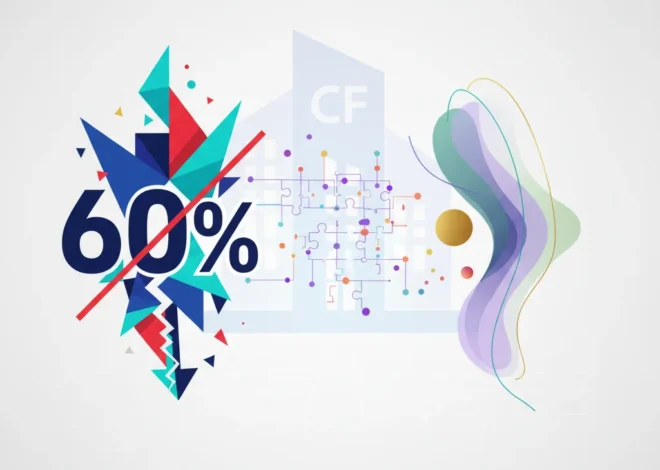
The Swift Economy: Deconstructing the Financial Juggernaut Behind a 4 Million Record-Selling Week
In an era where the concept of a physical music album feels almost nostalgic, a relic of a bygone time, one artist continues to defy every established trend and economic model. Taylor Swift’s latest album, ‘The Life of a Showgirl’, has achieved a feat considered nearly impossible in today’s digital landscape: selling over 4 million copies in its first week. This isn’t merely a music industry headline; it’s a seismic event in business, finance, and economics that demands closer inspection.
For investors, finance professionals, and business leaders, the success of this album is far more than a story about popular music. It’s a masterclass in brand loyalty, vertical integration, and direct-to-consumer economics. It signals a paradigm shift in how value is created and captured in the modern creator economy. While the rest of the industry struggles with the fractional pennies of streaming revenue, Swift has built a diversified, high-margin financial empire. To dismiss this as simple pop stardom is to miss one of the most compelling business case studies of our time.
An Anomaly in a Declining Market
To fully grasp the magnitude of this achievement, we must first understand the bleak landscape of the music industry. The digital revolution, while democratizing distribution, simultaneously dismantled the traditional revenue models that labels and artists relied upon. The shift from ownership (CDs, vinyl) to access (streaming) decimated album sales.
The success of ‘The Life of a Showgirl’ is described as “unprecedented in an era of declining music sales” (source) for a reason. The industry has been contracting for years, with artists celebrating “hits” that generate fractions of the revenue their predecessors enjoyed. Swift’s performance isn’t just an outlier; it’s a statistical impossibility that forces us to re-evaluate the entire market.
Let’s contextualize this with a comparative look at the industry’s trajectory versus Swift’s recent performance.
| Metric | General Music Industry Trend (2010-2023) | The “Taylor Swift” Counter-Trend |
|---|---|---|
| Physical Album Sales | Consistent decline, with a niche resurgence in vinyl. | Generates massive, record-breaking physical sales through strategic limited editions. |
| Revenue Concentration | Dominated by low-margin streaming royalties. | Diversified across high-margin physical products, merchandise, touring, and film. |
| Consumer Relationship | Largely intermediated by platforms like Spotify and Apple Music. | Direct-to-consumer (D2C) relationship, fostering a loyal, high-spending community. |
| Market Power | Artists often have limited leverage against labels and streaming giants. | Operates as a vertically integrated entity with immense market power and pricing control. |
This data illustrates that Swift is not just playing the game better than everyone else; she has fundamentally changed the rules of the game itself. Her strategy is a direct challenge to the accepted wisdom of the digital age.
The Blueprint: A Vertically Integrated Financial Ecosystem
So, how is this possible? The answer lies in a meticulously crafted business strategy that mirrors the most successful vertically integrated companies. Swift Inc., as it could be called, controls its product, marketing, distribution, and customer relationship with a precision that would be the envy of any Fortune 500 CEO. This model offers profound lessons in finance and investing.
1. Asset Management and Intellectual Property
Perhaps the most brilliant financial maneuver of Swift’s career was her decision to re-record her first six albums. In the world of finance, this is analogous to a company regaining control of its most valuable core assets. By creating “Taylor’s Version,” she not only devalued the original masters owned by a third party but also mobilized her entire consumer base to invest in the new, wholly-owned assets. It was a masterstroke in intellectual property law and a powerful lesson for any business about the long-term value of owning your creations. This single act fundamentally altered the power dynamics of her personal stock market value.
2. Microeconomic Manipulation: Scarcity and Demand
The sale of over 4 million albums was not an accident. It was engineered. By releasing multiple, limited-edition vinyl versions of ‘The Life of a Showgirl’, each with unique cover art or bonus tracks, her team transformed a single product into a collectible series. This strategy taps into core economic principles: creating artificial scarcity to drive urgency and higher consumer spending. Fans aren’t just buying music; they are participating in a form of asset trading, where certain vinyl variants become prized possessions with a burgeoning secondary market.
3. Disintermediation: A Fintech Approach to Fandom
At its heart, the Swift model is a case study in disintermediation, a concept central to the rise of financial technology (fintech). Just as fintech startups aim to bypass traditional banking institutions to offer services directly to consumers, Swift has systematically cut out the middlemen. Her “Verified Fan” program for concert tickets, while controversial, is a form of KYC (Know Your Customer) designed to ensure assets (tickets) go to true investors (fans) rather than scalpers (arbitrageurs). This direct line to her audience allows for frictionless commerce, from merchandise to music, creating a closed-loop economy where she controls the entire value chain.
The Macroeconomic Force: From Album Sales to “Swiftflation”
The impact of the Swift economy extends far beyond the music industry. Her “Eras Tour” has become a legitimate macroeconomic phenomenon. The Federal Reserve has even acknowledged its economic impact in reports. When the tour arrives in a city, it’s akin to a major economic stimulus package.
This “Swiftflation” effect demonstrates how a powerful brand can influence local economies, a concept that should resonate with anyone studying market dynamics. The influx of visitors leads to surges in hotel occupancy, restaurant bookings, and transportation usage, providing a tangible boost to local GDP.
Let’s examine the potential revenue streams that constitute this powerful economic engine, moving far beyond the initial album sale.
| Revenue Stream | Description | Relevance to Finance & Economics |
|---|---|---|
| Recorded Music | Physical sales, digital downloads, and streaming royalties. | Demonstrates ability to monetize a “devalued” asset class through strategic marketing. |
| Touring | Ticket sales, sponsorships, and on-site spending. The highest-grossing tour in history. | A case study in demand elasticity, dynamic pricing, and direct local economic impact. |
| Merchandise | Direct-to-consumer sales of apparel and collectibles. | High-margin revenue stream that deepens brand loyalty and acts as a form of marketing. |
| Film & Licensing | Concert films, documentaries, and brand partnerships. | Diversification of revenue, leveraging core IP into new markets and formats. |
The Future: Blockchain, Tokenization, and the New Financial Technology of Music
Looking ahead, the Swift model provides a tantalizing glimpse into the future of the creator economy, one that may be further revolutionized by financial technology like blockchain.
Imagine a world where music royalties are not processed through complex, opaque banking and collection societies but are distributed instantly to artists, producers, and writers via smart contracts on a blockchain. This would provide unprecedented transparency and efficiency, solving a problem that has plagued the industry for decades.
Furthermore, the concept of a “collectible” vinyl could evolve into tokenized digital assets or NFTs. A fan could own a verified, unique digital version of an album, complete with exclusive content, with its ownership recorded immutably on a blockchain. This would create new, liquid markets for music assets, enabling a new form of trading and investing in cultural moments.
While this may seem futuristic, the foundational principles are already present in Swift’s current model: verified ownership, community engagement, and direct artist-to-fan transactions. She has built the analog precursor to a decentralized, artist-centric financial ecosystem.
Conclusion: The Enduring Lesson from a Pop Icon
The record-breaking success of ‘The Life of a Showgirl’ is a powerful reminder that conventional wisdom is often wrong. In an age of fleeting digital consumption, Taylor Swift has proven that a dedicated community, combined with a brilliant business strategy, can generate immense financial value. Her career offers a rich tapestry of lessons for anyone in finance, investing, or business leadership.
She teaches us about the enduring power of asset ownership, the art of creating and controlling a market, the strategic advantage of a direct consumer relationship, and the incredible economic potential of a well-managed brand. The numbers are staggering, but the strategy behind them is the real story. For those on Wall Street and in boardrooms around the world, the biggest takeaway is this: the next revolutionary business model might not come from a tech incubator in Silicon Valley, but from the stage of a sold-out stadium. And that is a lesson worth investing in.


